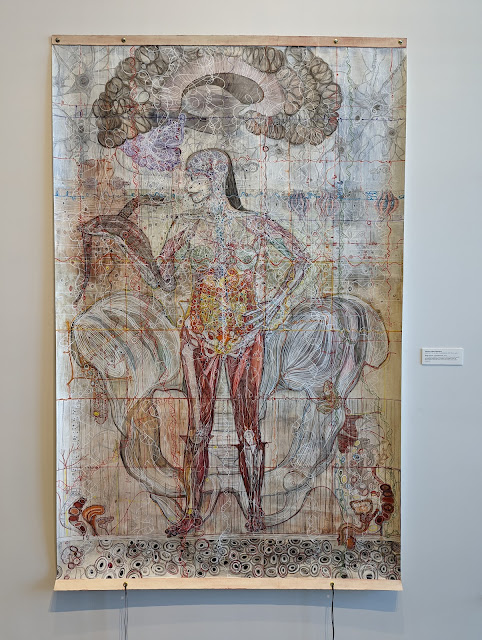 |
| Body Female - A Self Portrait, 2012 |
Martinez uses line, shape, space, and color to represent the complex connections between body, mind, and spirit. She is drawn to the language of myth and symbol, feminine and masculine, emotion and logic, circle and line, horizontal (heavens and spirit) and vertical (earth and body), finding beauty in the systems and organization of living things.
Which seems to cover every possible way of making art. The things that are most immediately applicable from the museum-speak are the technical means of making the pieces - huge banners of paper covered with intricate spiraling and crossing lines, and washes of pigment - and the systems of living things.
The central figure in each piece echoes the anatomical cross-sections of medical textbooks. But the internal structures are overlaid with patterns of line and colour that seem to be memories of other organisms, and also the pattern-making of linear abstract art. The figure is surrounded by other organs, or organisms, presented in the same meticulous construction of an image from a cross-section overlaid with layers of drawing.
 |
| Portrait of Elisa, A Matrilineal Study 2017-2022 |
The background consists of bands and verticals, across which swim overlapping patterns of cell-like structures and swirling lines that pass over and through the figure, suggesting perhaps how our inner structures reflect and connect with the inherent structures of all things.
Smaller framed works sometimes include paintings of faces executed in a more traditional representational style, though I thought these worked far less well than the 'anatomical' drawings. It's the large works that create the strongest impression. Martinez's process of stripping the living being down to its constituent parts, and building it back up again through an attentive repetition of that artist's hand and eye, ultimately creates a sense of presence, of awe, even, at the mysterious chemistry and biology of life.